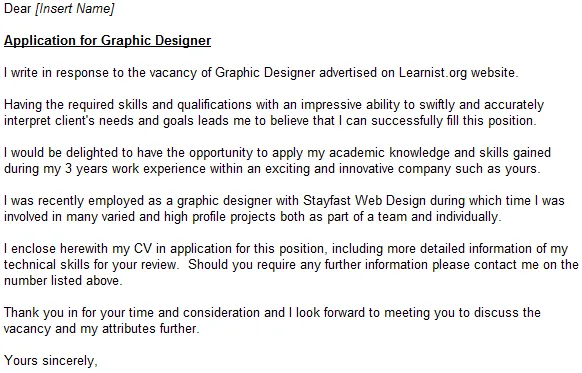A graphic designer cover letter is your first impression and key to landing your dream design job. It is a crucial document that complements your resume and design portfolio. While your portfolio showcases your creative abilities, the cover letter provides context, personality, and a narrative that tells the story of your career aspirations. In a competitive field, a well-crafted cover letter can be the deciding factor between getting an interview or getting overlooked. This guide provides top tips for crafting a compelling cover letter that highlights your skills and gets you noticed by potential employers. By following these guidelines, you will significantly increase your chances of securing an interview and ultimately, the job.
Why a Strong Graphic Designer Cover Letter Matters
A graphic designer’s cover letter isn’t just a formality; it’s your chance to stand out. It provides an opportunity to communicate your passion, skills, and unique qualifications in a way that your resume and portfolio cannot. It enables you to explain how your experiences align with the specific needs of the role and the company. This is where you demonstrate your understanding of the company’s brand and its design needs, showcasing that you are not just a designer but a strategic thinker. A strong cover letter shows initiative, attention to detail, and a genuine interest in the position. By emphasizing these aspects, you set yourself apart from other applicants, showing potential employers why they should invest in you. It’s about telling a story, demonstrating how your skills align with the job requirements, and making a memorable impression.
Crafting a Compelling Cover Letter Header
Your cover letter header is the first thing a recruiter sees. It should be professional, clean, and visually appealing. The header sets the tone and immediately conveys your attention to detail, a critical trait for any graphic designer. Avoid generic headers; instead, customize it to reflect your personal brand. This area should include your name, contact information, and perhaps a link to your online portfolio. Using a professional design aesthetic in your header will impress potential employers. Consider using a subtle color palette or a minimalist design that complements your style. It demonstrates you understand how to present yourself visually. Ensure that your header design is consistent with the overall aesthetic of your portfolio and resume. This consistency shows that you pay close attention to detail and can maintain a cohesive brand identity.
Your Contact Information
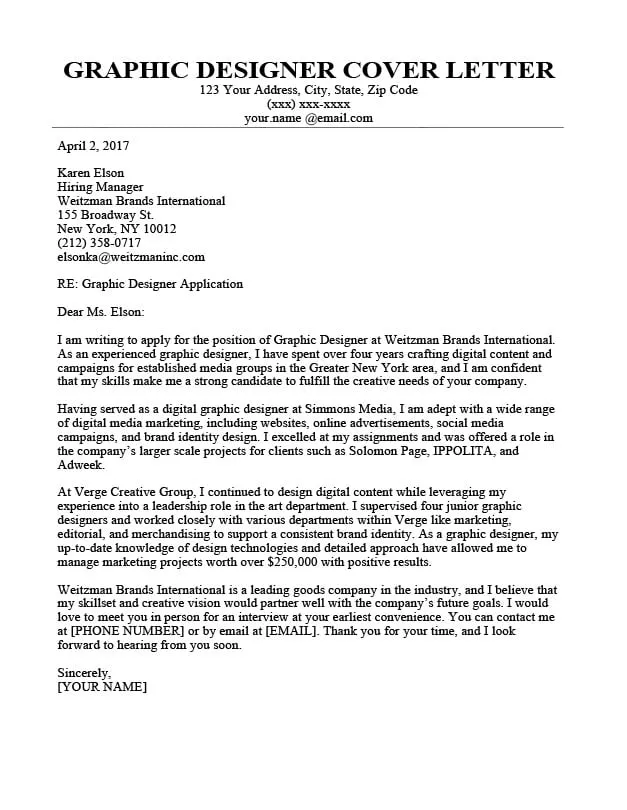
Include your full name, phone number, professional email address, and a link to your online portfolio or website. This is essential for the recruiter to contact you. Make sure your email address sounds professional. Avoid using nicknames or unprofessional phrases. Double-check that your phone number is accurate and that your voicemail message is professional and up-to-date. Ensure your portfolio link is working and directs to your most recent work. Consider adding links to your LinkedIn profile or other professional social media accounts, provided they are up-to-date and reflect your professional brand.
Date of Application
Always include the date on your cover letter. This helps the employer keep track of when you applied. Place the date below your contact information or at the top of the letter, aligned to the left or right. Use a standard date format (e.g., Month Day, Year). This simple detail demonstrates your organizational skills and attention to detail.
Recipient’s Information
If possible, address the cover letter to a specific person. Research the company to find the hiring manager’s name, or if this is unavailable, use the title of the hiring manager. Addressing the cover letter to a specific individual shows that you’ve taken the time to research the company and shows your initiative. If you can’t find a specific name, use a professional greeting like “Dear Hiring Manager” or “Dear [Department] Team.” Avoid generic greetings like “To Whom It May Concern.”
Writing a Powerful Cover Letter Opening
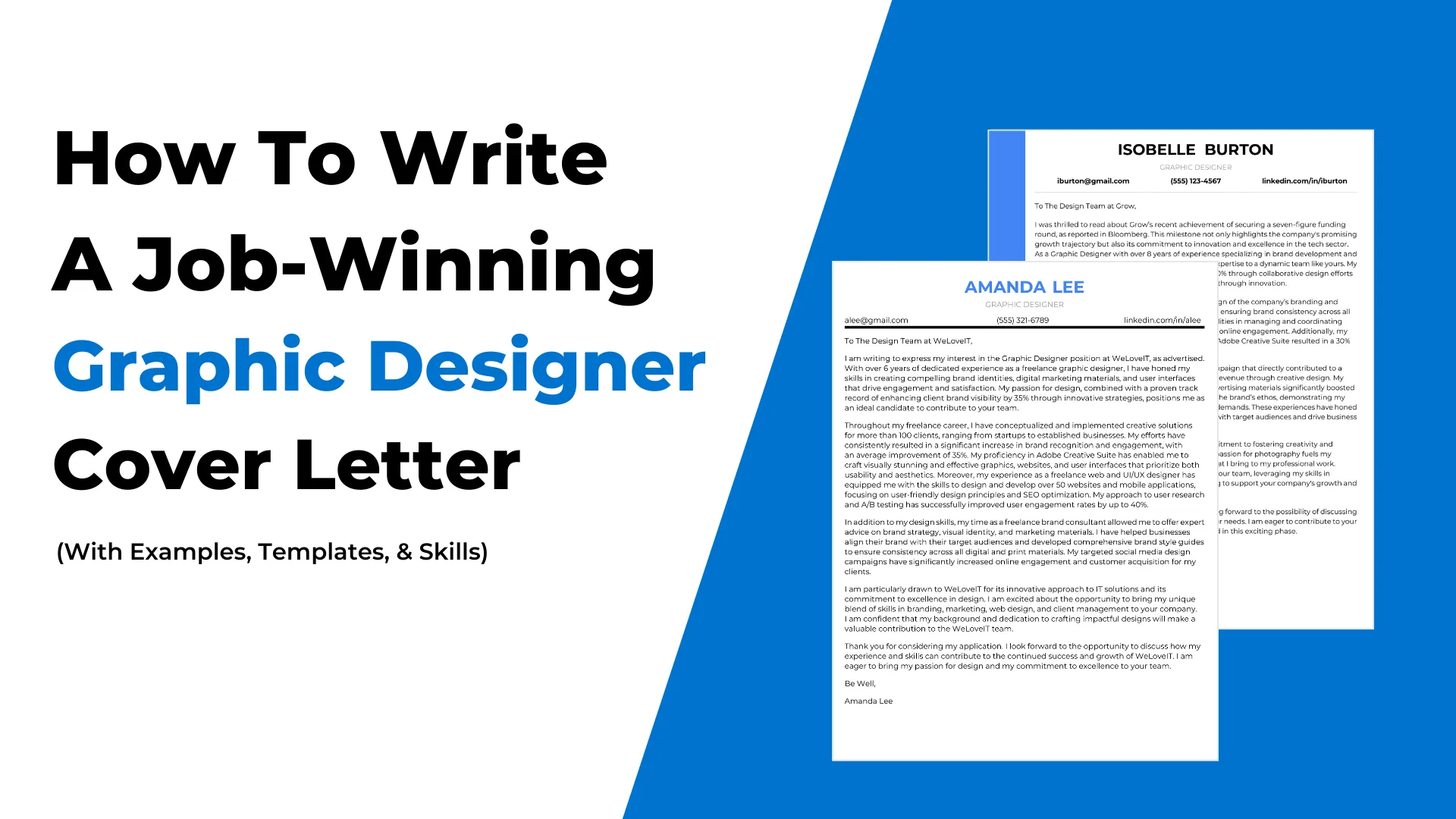
The opening paragraph is crucial. It must capture the reader’s attention immediately. Start by stating the position you’re applying for and where you found the job posting. Next, briefly mention what excites you about the opportunity and the company. Then, demonstrate your understanding of the company’s mission and values, highlighting how your skills align with their needs. This will establish your genuine interest and knowledge about the company. Keep it concise and engaging. A well-crafted opening creates a positive first impression and encourages the recruiter to read the rest of your letter. Always tailor the opening to the specific job and company, showcasing your understanding of their needs.
Highlighting Your Graphic Design Skills
This is where you showcase your skills. Focus on the skills that are most relevant to the job description. Mention your proficiency in design software like Adobe Creative Suite (Photoshop, Illustrator, InDesign), Figma, or Sketch. Give specific examples of how you have used these skills to achieve results in previous projects. Highlight your understanding of design principles such as typography, color theory, layout, and branding. Use action verbs to describe your skills, such as “designed,” “developed,” “created,” and “managed.” Tailor the skills to the job requirements, addressing what the company is looking for in a graphic designer. Show, don’t just tell; illustrate how you have used these skills to overcome challenges or achieve objectives in the past.
Showcasing Your Relevant Projects
Select a few of your most relevant projects and briefly describe them. Focus on projects that align with the company’s work or the specific job requirements. Explain your role in each project and the results you achieved. Quantify your accomplishments whenever possible. Use metrics like “increased website traffic by 20%” or “reduced production costs by 15%.” Briefly mention the challenges you faced and how you overcame them. Your cover letter isn’t just about listing projects; it’s about demonstrating your problem-solving abilities and your capacity to deliver results. Ensure each project demonstrates your versatility and proficiency in various design areas, such as logo design, web design, or marketing collateral. Refer to your portfolio and include links if it helps the recruiter easily access your work.
Quantifying Your Achievements with Data
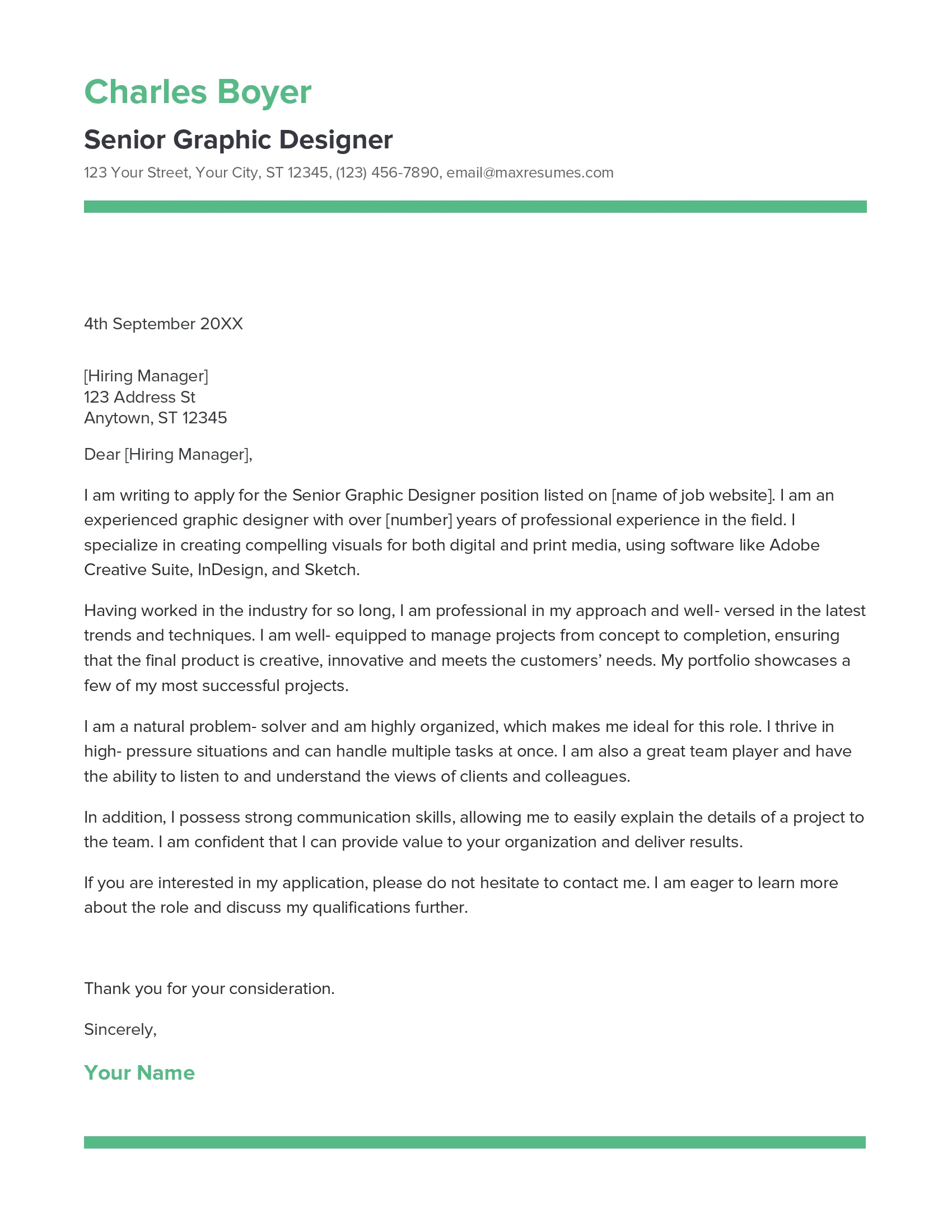
Wherever possible, support your claims with quantifiable data. This adds credibility to your accomplishments and demonstrates the impact you have made. Instead of saying “Improved social media engagement,” say “Increased social media engagement by 30%.” Include metrics that are relevant to the job, such as website traffic, conversion rates, or customer satisfaction. Highlight the results of your work, such as how your designs helped increase sales, improve brand recognition, or enhance user experience. Use numbers to showcase your value to potential employers, demonstrating the concrete results you have achieved in previous roles. Include data that shows you understand business goals and how your designs contribute to them.
Demonstrating Your Passion for Design
Express your enthusiasm for graphic design and the company’s work. Discuss what attracts you to the role and why you are interested in the company. Share your design philosophy and your commitment to creating impactful designs. Include a brief mention of any personal projects or design interests that demonstrate your passion for the field. Show that you are not just looking for a job, but are genuinely excited about the opportunity to contribute to the company. Show that you are up-to-date with design trends and developments in the industry. Enthusiasm can make a strong impression, especially if it’s combined with the right skills and experiences. Remember to maintain a professional tone while expressing your enthusiasm, showing that you are both passionate and capable.
Tailoring Your Cover Letter to the Job
Customize each cover letter for each job application. This demonstrates your genuine interest in the role and shows you’ve taken the time to research the company and understand its needs. Read the job description carefully and highlight the skills and experiences that align with the requirements. Use keywords from the job description throughout your cover letter. Tailor the tone and style of your cover letter to match the company’s brand. Include examples of projects that align with the job’s requirements and show that you can meet their specific needs. Demonstrating this tailored approach shows that you understand the company’s work and have the necessary skills to contribute meaningfully to their team. This personalized approach is what makes your cover letter more compelling and effective.
Avoiding Common Cover Letter Mistakes
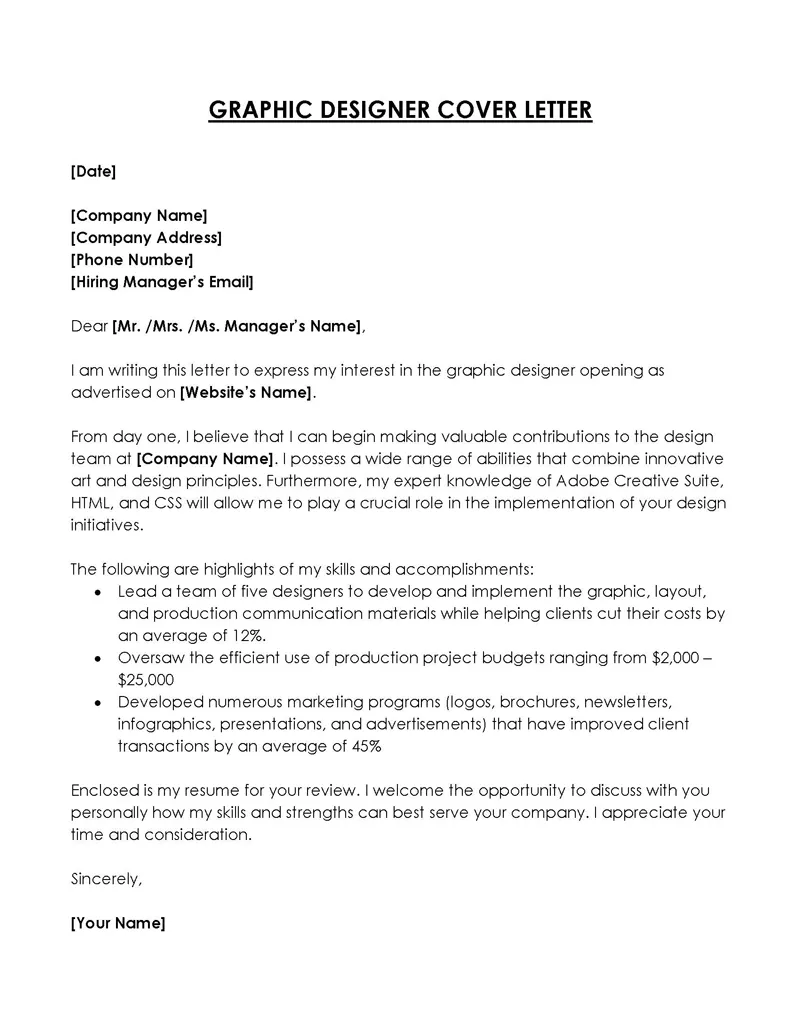
Avoid common mistakes such as typos, grammatical errors, and generic language. Proofread your cover letter multiple times before submitting it. Do not simply restate your resume; your cover letter should provide additional context and showcase your personality. Avoid vague statements; instead, provide specific examples of your accomplishments. Do not use clichés or overly formal language. Keep the cover letter concise and to the point, typically one page in length. Avoid sending a generic cover letter; always tailor it to the specific job and company. Make sure your design is clean and professional and the formatting is easy to read.
Proofreading and Editing Your Cover Letter
Proofread your cover letter meticulously before submitting it. Check for grammatical errors, spelling mistakes, and typos. Ensure that your sentences are clear and concise. Have someone else read your cover letter to provide feedback. Review the formatting to ensure it is consistent and professional. Use a grammar checker tool to catch any errors that you might miss. Pay attention to the tone and style of your cover letter. Ensure it matches the company’s brand and is appropriate for the role. Careful proofreading is essential to ensure that your cover letter is polished and error-free. A polished cover letter shows attention to detail and professionalism.
Closing Your Cover Letter Professionally
End your cover letter with a professional closing and a call to action. Thank the hiring manager for their time and consideration. Reiterate your interest in the position and the company. Include a call to action, such as “I look forward to hearing from you” or “I am eager to discuss my qualifications further.” Provide your contact information again, including your phone number and email address. Use a professional closing such as “Sincerely,” “Best regards,” or “Thank you.” Avoid casual or informal closings. A professional closing leaves a positive last impression, making you appear professional and enthusiastic about the opportunity. Make sure the tone of your closing matches the overall tone of your cover letter.
Cover Letter Template for Graphic Designers
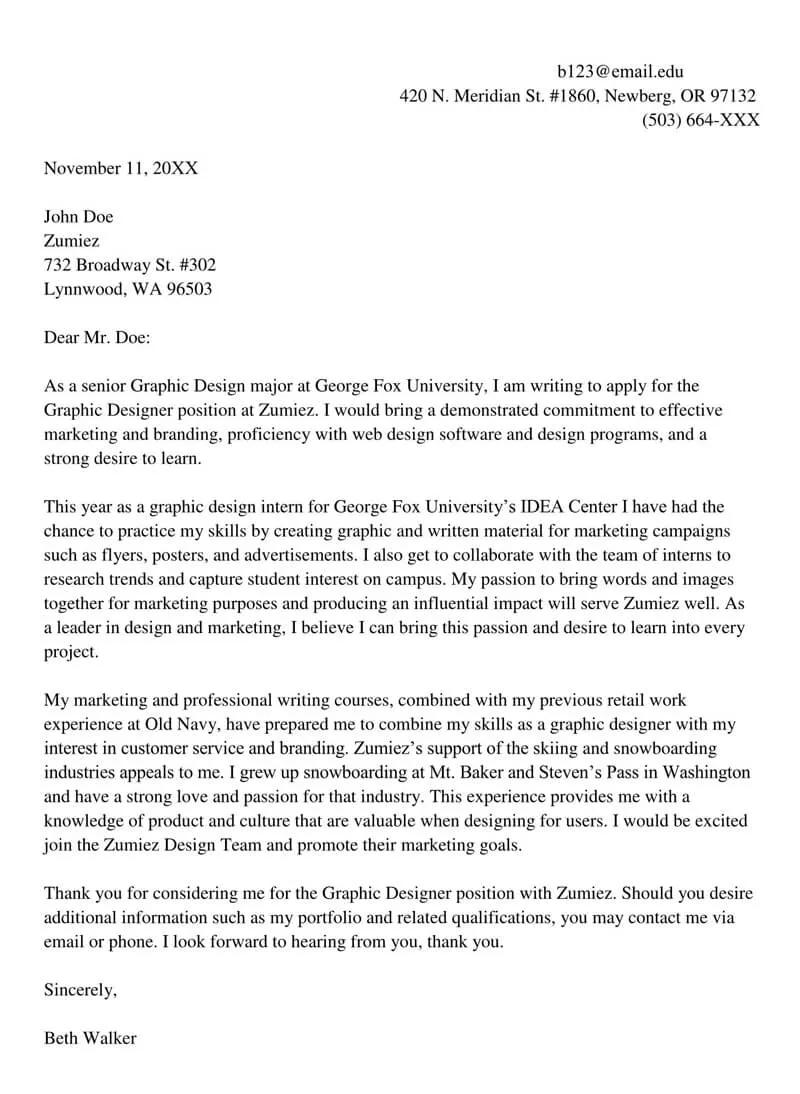
Use a template as a starting point but always customize it. Templates provide a structure and help you organize your thoughts. Customize it to match the specific job and company you are applying for. Make sure the template aligns with your personal brand and design style. Adapt the template to highlight your most relevant skills and experiences. Make sure that your final cover letter reflects your unique qualifications and the requirements of the job. A well-designed template can guide you, but personalizing it is essential for making a strong impression and making your cover letter stand out. A good template includes sections for your contact information, the date, the recipient’s information, an opening paragraph, body paragraphs highlighting skills and projects, and a professional closing.
Key Takeaways
A compelling graphic designer cover letter is crucial to landing your dream job. It should be tailored to each job application, highlighting your skills, showcasing your projects, and demonstrating your passion for design. Include quantifiable achievements whenever possible. Proofread your cover letter carefully, and always end with a professional closing. By following these tips, you can create a cover letter that sets you apart and increases your chances of getting an interview and succeeding in your job search.
